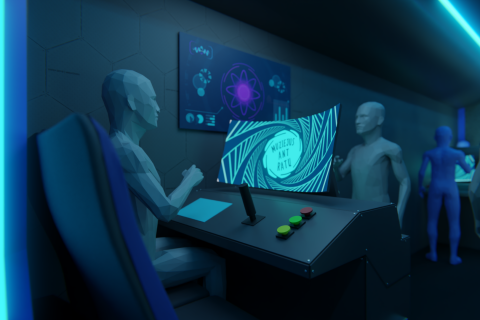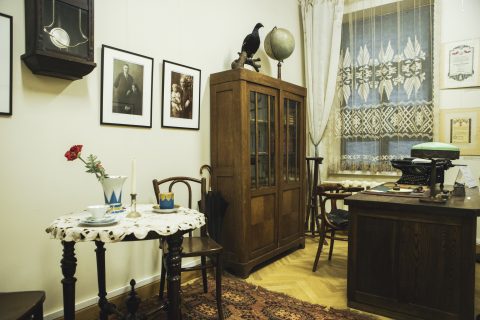“I was inspired by my love for literature, books, and people. The discipline seemed very interesting,” Daiva Nevardauskienė, who graduated from Art Gymnasium, explained her reasons for studying Library science and cataloguing. And although after her studies at Vilnius University, she worked at the Kalniečiai library on Savanorių Avenue for a while, she soon returned to her native Panemunė, where she had always lived. At first, she settled in the parish building on Vaidoto St. 26, where other interesting things are happening now (we wrote about them in this year’s March issue), then in a house surrounded by trees and now the library has been operating in the center of the neighborhood for five years.
Each month we visit many branches of Vincas Kudirka Public Library in Kaunas with the copies of the magazine. And I must say that each branch has something unique about it. Panemunė was etched in my memory during the quarantine, when libraries were perhaps the only functioning places of culture. Here, books were handed out to the readers through a window. “Perhaps we were the only ones in Lithuania who worked like this,” the head of the branch smiles. It turns out that the doors of the building, where more institutions are located, had to be locked, but the library wanted to continue working. The solution was found, and the readers were happy.
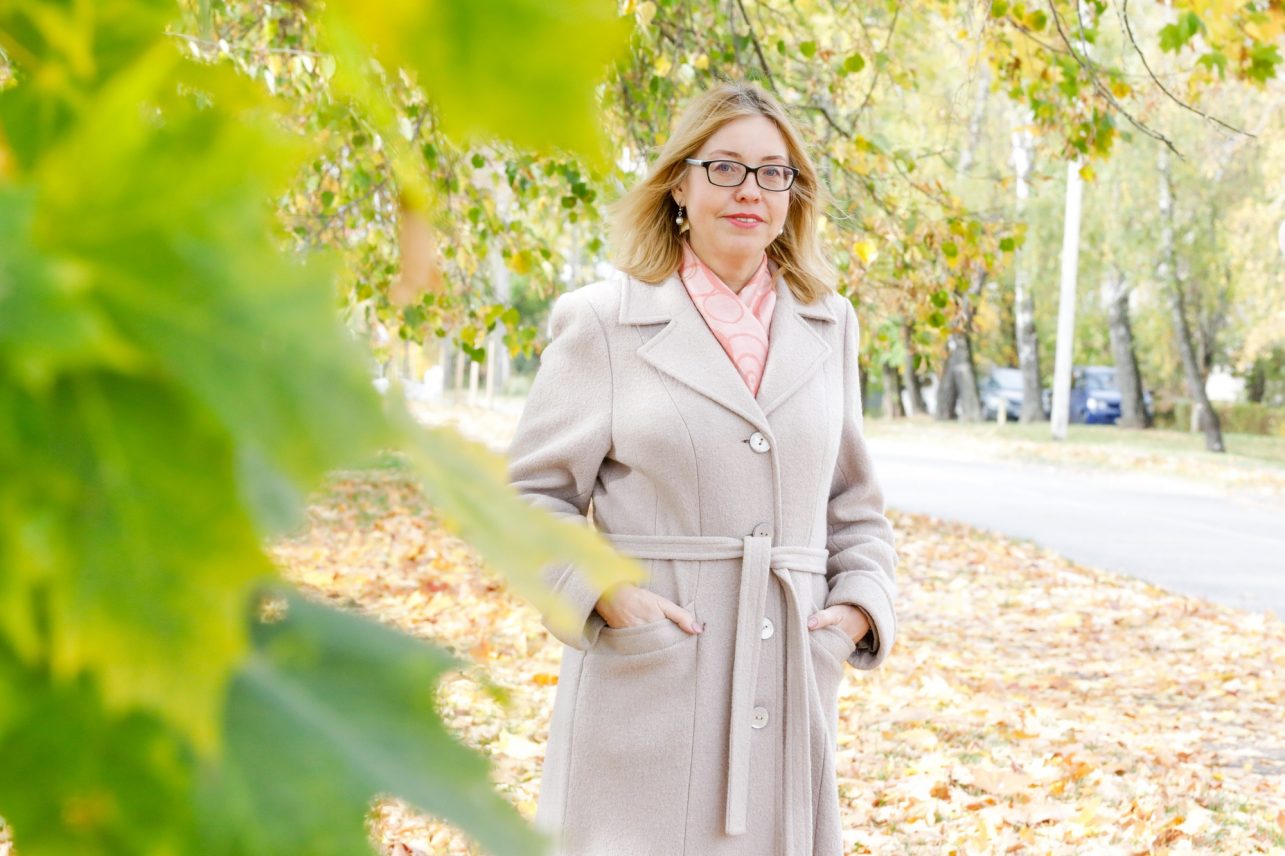
I have known Daiva’s last name for a long time – she is the author of books about Panemunė, a painter, and even a tour guide, so activities organized by her, frequently appear on our lists of recommended events. She agrees with the idea that working in a library is not boring, because it is an opportunity to reveal your talents while working with various communities in organizing exhibitions, meetings, workshops and other events.
“We have been bringing books to Panemunė’s retirement home since 1988, when it was called a checkout station. We also organized events there, for example, commemorating public holidays. We held handicraft workshops and then started to hold more activities in the library.” Daiva reveals that there was even a puppet theater on Vaidoto Street once. Panemunė community center was established in 2003 and Gediminas Žukauskas has been its head since then. Community members would gather in a rectory or library. “We got to know each other during collective cleanup. We would pick trash next to the Nemunas or in Panemunė pinewood. People here are sociable. Sometimes, they would even bring potato pancakes or cepelinai if I worked on Saturday.”
When in 2012 the library and other organizations moved to renovated premises on Vaidilos St. 27 (this is the building of the former pioneer camp Trimitas. New buildings are being planned in its place). The community now had its space, and everyone worked in unison. A summer stage was set up were romance nights, mushroom festivals, educational tours in Panemunė pinewood as well as professional and amateur exhibitions took place. On July 16, people gathered at the monument to Jonas Basanavičius, and the concerts on February 16 are still organized next to it, today, “We try to keep up with these traditions, but we also create our own.”
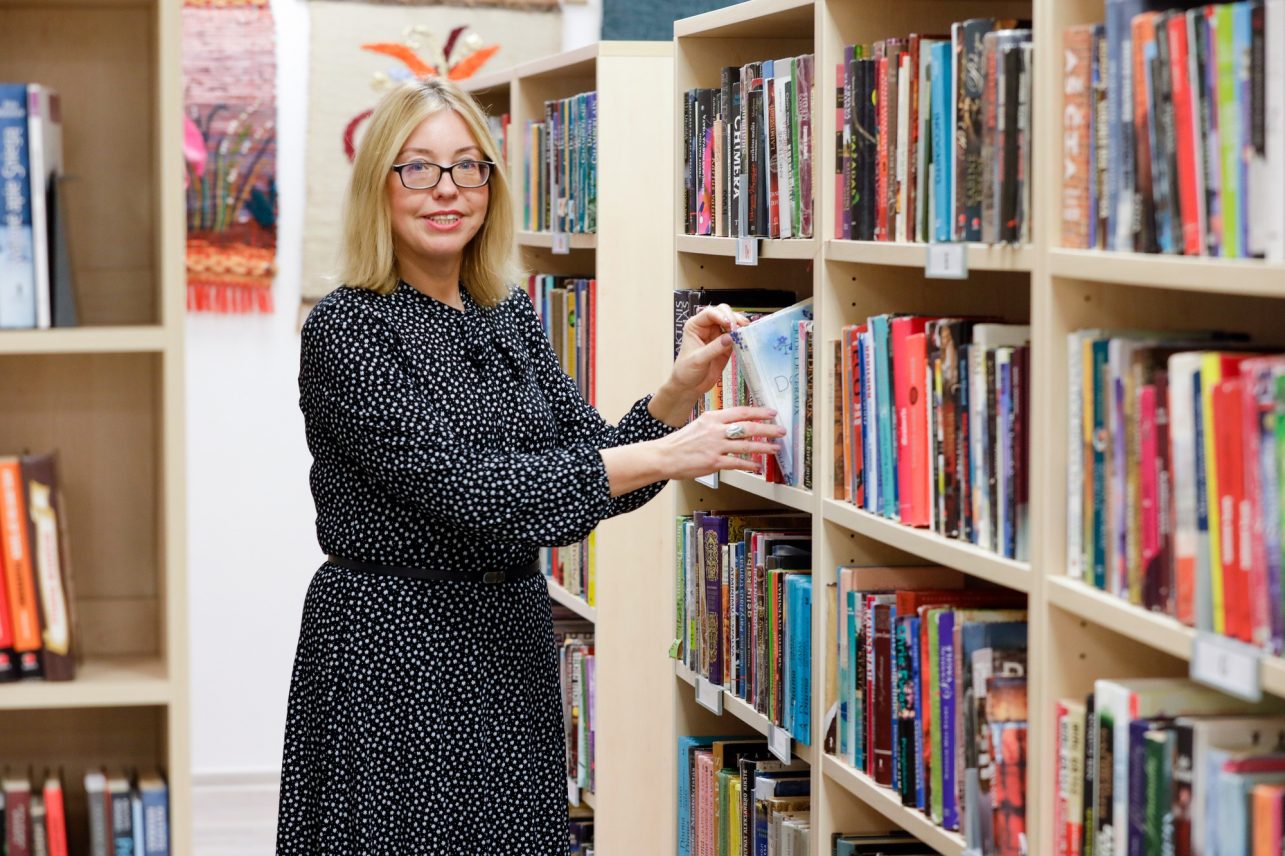
Five years ago, the library, the town hall and other institutions were moved to the former school, multi-purpose center on Vaidoto St. 115, where we are now. Through the window you can also see the location of the very first library that operated on Smėlio St., where Sena skrynia restaurant is now. This is a good time to welcome the oldest library visitor. Romas Jurgelionis has been coming to the library since 1945, so it can be said that by traveling through ever new location he has come a full circle.
And what do Panemunė residents read? “I think their choices coincide with general trends. Children follow school program literature. Among the most popular ones there is The Diary of Anne Frank (although it is enjoyed by the adults too), Siberian Haiku, Between Shades of Gray. Adults mostly prefer detective novels, real life stories, or biographies of famous people, for example, works by Nijolė Narmonataitė, a book about Nelly Paltinienė, the diary of Juozas Baltušis,” the interviewee lists the most popular genres and books. And what does she read? “Sometimes bestsellers, for example, Where the Crawdads Sing. I also like travel books because I like traveling, also psychological literature and books about artists. I am a library visitor,” she laughs and says she doesn’t buy books because even if she doesn’t find the one, she needs here she knows where to find it, after all, the library network in Kaunas and Lithuania is excellent.
I ask Daiva if she and her two colleagues have to worry about what to fill department’s calendar and spaces with, or people have many suggestions. “Things happen organically, after all, we have years of experience. Of course, we come up with a lot of things ourselves, but we are also approached by artists, or the Public Health Office that offers lectures. Writers come with suggestions too. I hold graphic arts workshops for children and art classes for Bičiulės club for people with mental disabilities. We make friends with people with diabetes, as well as the elderly. Various people. One activity attracts another,” the woman, who combines official duties and talents, smiles. She remembers that when she was preparing the book titled The History of Aukštoji Panemunė, she had no free time at all. The second, supplemented edition of the book appeared last year, taking advantage of the pandemic period. Two smaller books about Panemunė have been published for those who like hiking or cycling. More and more people are trying to get to know their country and city better, so Daiva’s books are not only interesting and necessary for locals – other communities could also publish similar books. I must mention that I am glad to have a publication on my shelf, titled Petrašiūnai: Memories and Reflections prepared by Genovaitė Mikėnaitė. Žemieji Šančiai community also continues to fill various virtual maps of memory, past and nature.
“How did I become a writer? It all happened because of the community. When I started working in the library, I wanted to hold as many activities as possible, so that more people would discover us. I belonged to the community board, the local community council, I was involved wherever possible. The chairman suggested, “Daivutė, you should collect material about Panemunė, and then we will publish a chronicle.” I said to myself, maybe I will try myself in this area as well. Perhaps it will work out” At that time, the woman also worked in the museum of the school named after the traveler Matas Šalčius (today, KTU engineering lyceum), where she found some interesting material. The collected information was grouped by periods: before the First Republic, then until the Second World War… Panemunė is multifaceted. It has a resort, military barracks, a military school; officers lived and were buried here. There was also room for the history of Aukštoji Panemunė parish, which no longer belongs to Kaunas but to Vilkaviškis diocese.
“I, and probably many who read these books, were surprised that the first airport was established in Panemunė, when it was part of the Kaunas fortress, during the period of Tsarist Russia,” the author reveals what was an unexpected discovery for her. The buildings built for the tsar’s army are still in good condition today and Juozas Vitkus Engineer Battalion of the Lithuanian Land Forces operates in a military town. Its territory is closed, you will not get in easily, but you will find some historical material about it in the book. As well as memories and stories about the Jews of Panemunė and its notable residents told by The Duchess Birutė Association of Women from Officers’ Families, old photographs and Daiva’s drawings.
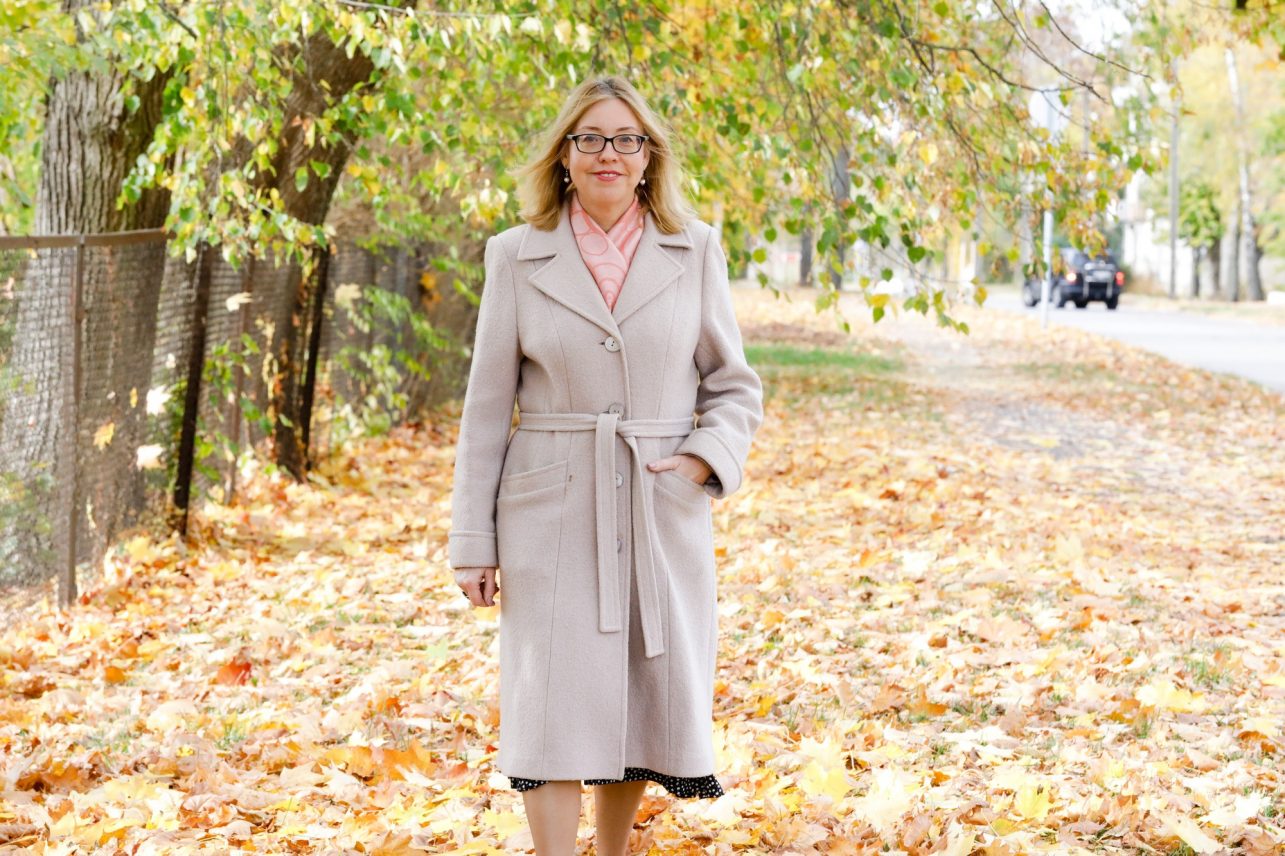
“Students have used this book for their course works or theses,” says the woman, who learned so much about her place of residence that she became a tour guide and organizer of plein airs. This summer, she curated the first plein air in the Nemunas, or rather, on the Nemo raft. It was an event supported by Let’s Celebrate the River initiative. I looked at the artworks produced during this plein air while waiting for Daiva in the library.
Here, in a room utilized for events, some time ago, the Ukrainian community of Kaunas started its meetings. Maybe you remember how we wrote about its member, painter Olha Sayenko, whose debut exhibition was held here, in the magazine’s June issue. Daiva nods. She did read it and was happy when Olha mentioned Panemunė. It was this branch of the city library that was the first to offer books in Ukrainian. When the war started, the first shipment from Kharkiv arrived here.
The Japanese found the neighbourhood library very interesting.
While showing various awards for community-strengthening activities, including the Crystal of Kindness and taurus, the symbol of Kaunas, Daiva tells me about the fun dance evenings for seniors that take place in a lot in the pinewood, in the place where the Kurhaus once stood, “I remember them from my childhood.” Another feature of Panemunė is the annual St. Rocco’s Church Festival. On the festival’s eve, a night of romances takes place and during the festivities, a procession walks around the church of the Virgin Mary. This is a tradition that is no longer found elsewhere in Kaunas. Inquisitive fans of the resort atmosphere will like the wooden villas. At least one of them offer an overnight stay – a family-restored Villa Grabytė. Panemunė residents are still waiting for other villas to be revived.
Daiva and I also discussed the personality of the traveller Matas Šalčius and immortalizing it, the Righteous Among the Nations who lived in Panemune, connections and exchanges with other branches of the library, creative freedom and even the Japanese board game go (its club was active on Vaidoto St., 26 from 2002 to 2008). Panemunė residents participated in international tournaments and had welcomed the players from Osaka. “The Japanese found the neighbourhood library, which was warmed by the stoves, located between the peeling walls and the door that was “locked” with a hook, very interesting,” one of the most active members of the community recalls. She is also surprised that we have only been talking for an hour! We will have to continue the conversation after I read her book.

